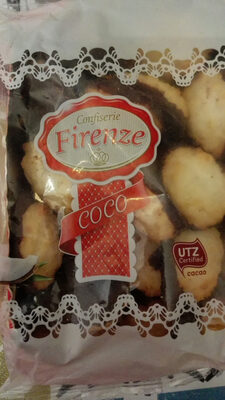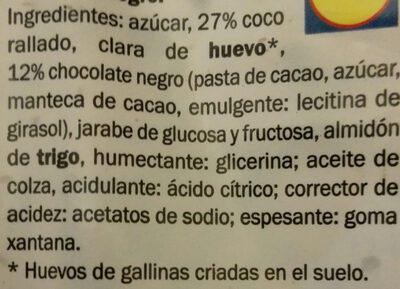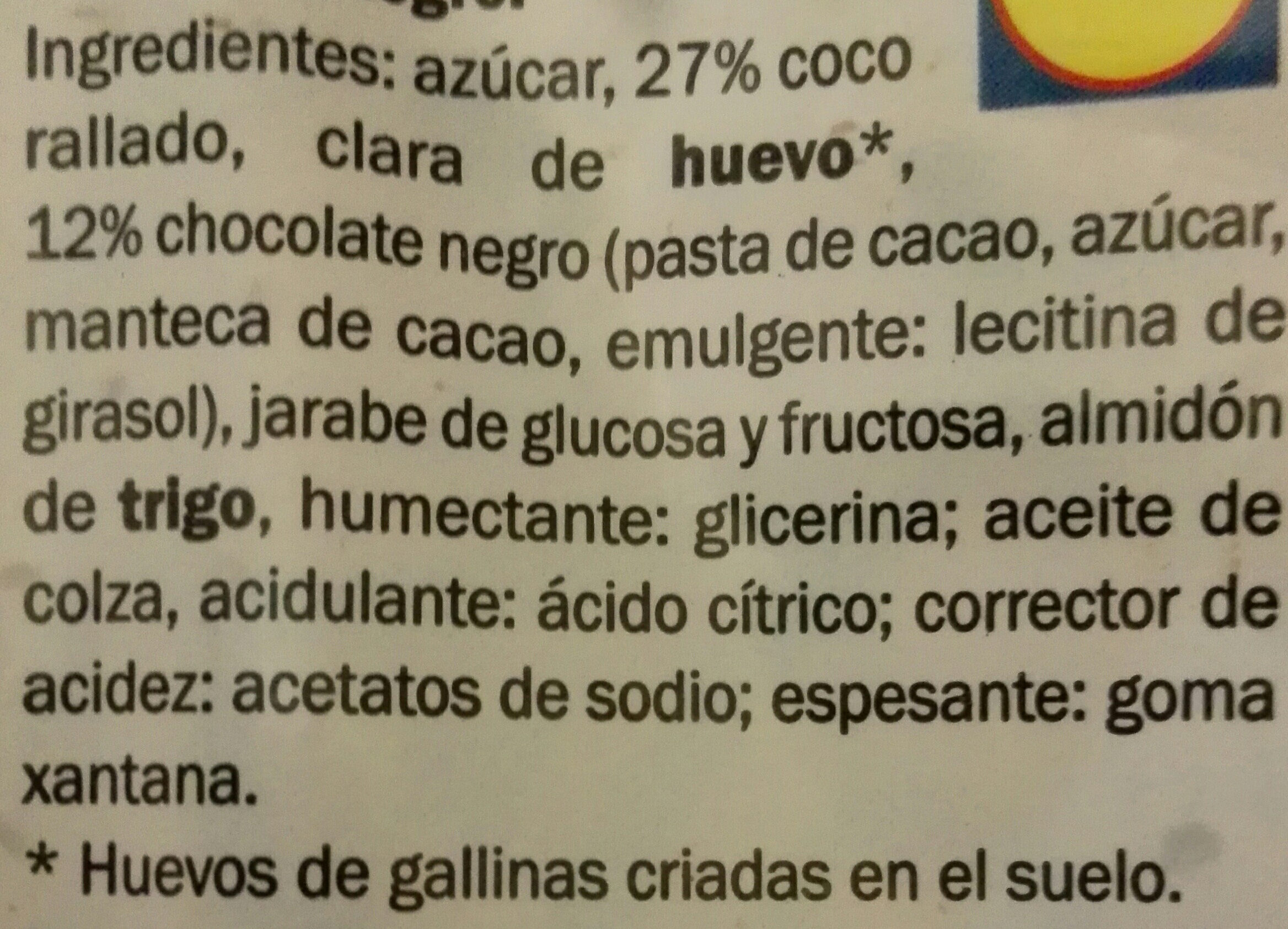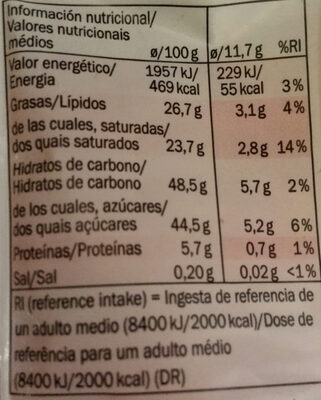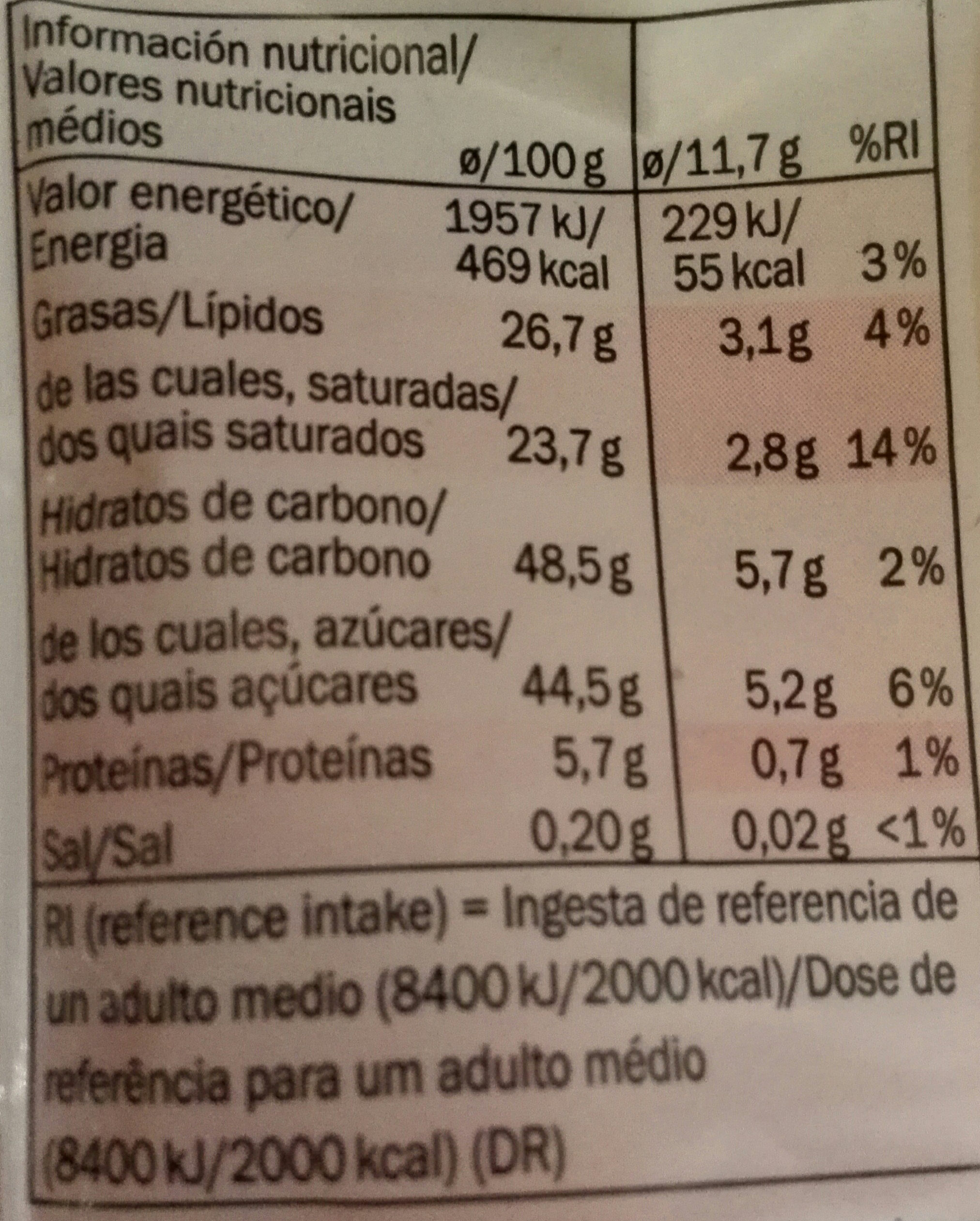Coco - Confiserie Firenze - 200 g
Codi de barres ambigu: aquest producte té un codi de barres amb número de circulació restringit per a productes d'una empresa. Això significa que diferents productors i botigues poden utilitzar el mateix codi de barres per a diferents productes.
×
Aquesta pàgina del producte no està completa. Podeu ajudar a completar-la editant-la i afegint-hi més dades a partir de les fotos ja disponibles, o fent-ne més amb l'aplicació de androide o iPhone / iPad. Gràcies!
×
Codi de barres: 20602949
Nom comú: Pastitas de coco con chocolate negro
Quantitat: 200 g
Empaquetament: en:Tray
Marques: Confiserie Firenze, Lidl
Categories: Snacks, Aperitius dolços, Galetes i pastissos
Etiquetes, certificacions, premis:
Agricultura Sostenible, Certificat UTZ, Cacau certificat UTZ
Botigues: Lidl
Matching with your preferences
Entorn
Empaquetament
Transport
Etiquetes
Report a problem
Fonts de dades
Producte afegit per openfoodfacts-contributors
Última modificació de la pàgina del producte per october-food-facts.
La pàgina del producte, també editada per musarana, packbot, safarikas.
Si les dades són incorrectes o incompletes, pot completar o corregir editant aquesta pàgina.
